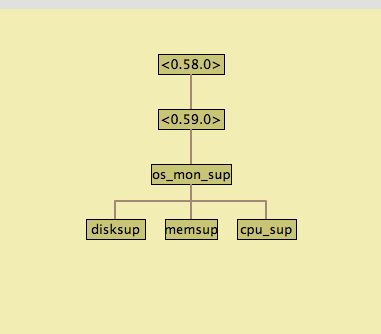application配置文件和热升级
原创文章,转载请注明: 转载自系统技术非业余研究
本文链接地址: application配置文件和热升级
前面我们一直说过erlang是以app为单位来组织程序,数据,配置等信息,让这些信息聚合在一起成为一个整体,设计上和unix系统一模一样。 那app的配置信息存在哪里呢?
配置信息有三种方式体现(其实是4种):
1. .app文件里面的env字段, 通常是MyApplication.app, 具体参见这里
2. .config文件,通常是sys.config,具体参见这里
3. 命令行 erl -ApplName Par1 Val1 … ParN ValN 具体参见这里
我们摘抄重要的信息如下:
方式1:
7.8 Configuring an Application
An application can be configured using configuration parameters. These are a list of {Par, Val} tuples specified by a key env in the .app file.
{application, ch_app,
[{description, “Channel allocator”},
{vsn, “1”},
{modules, [ch_app, ch_sup, ch3]},
{registered, [ch3]},
{applications, [kernel, stdlib, sasl]},
{mod, {ch_app,[]}},
{env, [{file, “/usr/local/log”}]}
]}.
Par should be an atom, Val is any term. The application can retrieve the value of a configuration parameter by calling application:get_env(App, Par) or a number of similar functions, see application(3)
方式2:
A configuration file contains values for configuration parameters for the applications in the system. The erl command line argument -config Name tells the system to use data in the system configuration file Name.config.
Configuration parameter values in the configuration file will override the values in the application resource files (see app(4)). The values in the configuration file can be overridden by command line flags (see erl(1)).
The value of a configuration parameter is retrieved by calling application:get_env/1,2.
方式3:
The values in the .app file, as well as the values in a system configuration file, can be overridden directly from the command line:
% erl -ApplName Par1 Val1 … ParN ValN
这三种方式都可以很方便的来设置应用的配置信息,由于一个应用会依赖于其他很多应用,所以会有很多的配置信息,这里我比较推荐sys.config方式,这也是rebar组织配置文件的标准形式。
Read more…
Post Footer automatically generated by wp-posturl plugin for wordpress.


Recent Comments